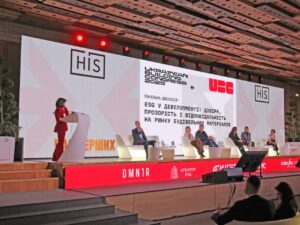
Engineering and construction company Rauta will launch sandwich panels, ventilated facades, and roofing materials made from “green” steel on the Ukrainian market next year, Rauta Director Andriy Ozeychuk announced during a panel discussion at the 5th Ukrainian Construction Congress in Kyiv on Friday.
“In 2026, Rauta will launch sandwich panels, ventilated facades, and roofing materials made from ‘green’ steel, which is produced using hydrogen, electricity, and biogas instead of fossil fuels. The residual product of this production process is not carbon dioxide, but water,” he said, citing an example of the company’s implementation of ESG principles (Environmental, Social, Governance – environmental, social and corporate responsibility).
According to him, the use of “green” steel, in particular, will significantly reduce the amount of embodied carbon and increase the number of points when certifying a building according to the LEED and BREEAM environmental systems.
Rauta systematically implements key ESG principles in its activities, because a transparent corporate culture and reputation are important to the company’s customers. “The projects implemented by our company always incorporate solutions that comply with ESG principles. For example, the Energy series’ airtight technology and sandwich panels reduce operational carbon and increase the sustainability of the facility,” says Ozeychuk.
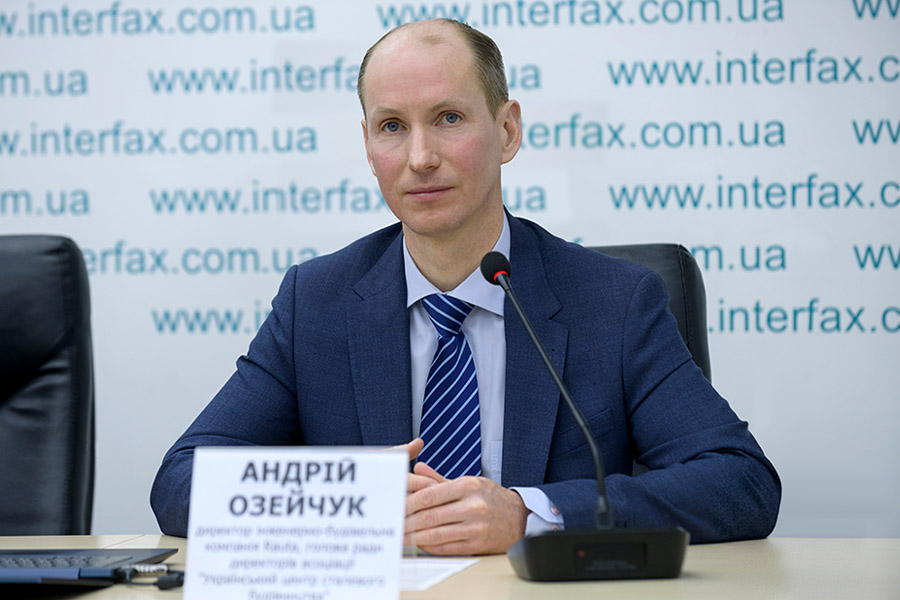
In 2022, Rauta was the first in Ukraine to introduce Environmental Product Declarations (EPDs) for building envelopes. The company is also actively involved in social projects: it partners with architectural competitions, provides grants for training young architects at InLab and Plus Minus schools, has set up a training stand in a specialized energy conservation auditorium at KNUSA, and has launched an educational project on sustainable design.
The expert noted that the advantage of steel solutions for the customer is the speed of project implementation and the ability to create large-span spaces. If necessary, steel frames can be relatively easily relocated or 100% recycled as scrap metal, which significantly increases their value for the customer compared to reinforced concrete solutions.
Ozeychuk stated that European construction customers implementing projects in Ukraine are not only willing to pay for steel solutions, but also often insist on the use of more environmentally friendly and energy-efficient materials.
“This is due to a more conscious attitude towards ecology and construction experience in the EU, where the European Energy Performance of Buildings Directive (EPBD) is in force, which sets requirements for improving the energy efficiency of existing and new buildings, which directly affects the criteria for selecting materials. Unfortunately, Ukrainian construction customers mainly look at low prices rather than environmental or quality characteristics,” he said.
According to his forecast, if Ukraine implements the European Directive, the demand for materials with better thermal and environmental characteristics will increase. “This will increase competition between Ukrainian and European manufacturers and force the former to invest in modern production processes to improve the environmental friendliness and energy efficiency of their products,” Ozeychuk believes.
Rauta is a leader in the Ukrainian steel construction market and a member of the European Construction Industry Association. The company provides design, manufacturing, and installation solutions in accordance with current EU standards. The company is licensed to perform construction work with medium and significant consequences (CC2, CC3). According to the Unified State Register, Andriy Ozeychuk owns 100% of the company’s authorized capital.
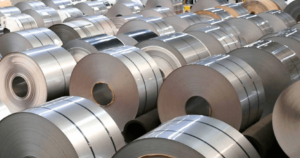
Global demand for steel in 2025 will remain at the previous year’s level — about 1.748 billion tons, after a 1.6% decline in 2024. These figures are given in the short-term forecast of the World Steel Association (Worldsteel) — Short Range Outlook (SRO).
In 2026, according to experts, demand will grow by 1.3% to 1.772 billion tons, driven by recovery in Europe, India, and the rapidly developing countries of Asia, the Middle East, and Africa.
According to Worldsteel’s forecast, in the CIS countries, including Ukraine, demand for steel will decline by 5.2% in 2025, to 56.1 million tons, and by another 1.7% in 2026, to 55.2 million tons.
At the same time, India will retain its status as the world’s fastest-growing steel market, with growth of around 9% annually in 2025-2026. Already next year, steel consumption in India will be almost 75 million tons higher than in 2020.
In developing countries (excluding China), demand for steel will increase by 3.4% in 2025 and by 4.7% in 2026, driven by active economic development in ASEAN countries, as well as in Saudi Arabia and Egypt.
In Africa, steel consumption is growing by an average of 5.5% annually, reaching 41 million tons in 2025 — the highest level in the last decade. Growth is driven by investments in construction and improved macroeconomic indicators.
Andriy Ozeychuk, Chairman of the Board of Directors of the Ukrainian Steel Construction Center and Director of Rauta, commented on the market situation and prospects for the Ukrainian steel sector.
“The Ukrainian steel market in 2025–2026 will be shaped by the recovery of domestic demand in construction and machine building, as well as the growth of exports of metal structures to the EU. We predict that demand for steel in Ukraine may grow by 6-8% in 2026 due to infrastructure and industrial recovery projects,” Ozeychuk said.
According to him, the steel construction sector will be the driver of this growth:
“The use of metal structures will accelerate the restoration of logistics, industrial, and infrastructure facilities.”
Ozeychuk also stressed that the launch of joint programs with European partners in the field of “green” metallurgy, where Ukraine already has its first pilot initiatives for the production of steel with a low carbon footprint, could give the industry an additional boost.
According to the forecast, demand for steel in the EU+UK region will increase by 1.3% in 2025 and by 3.2% in 2026. This reflects the impact of increased investment in infrastructure and defense amid lower inflation and improved household incomes.
In the US, Worldsteel expects steel consumption to increase by 1.8% in both 2025 and 2026. The main drivers of growth will be government spending on infrastructure, a revival in housing construction, and private investment.
In China, steel demand will continue to decline, by approximately 2% in 2025, due to the prolonged downturn in the real estate market. In 2026, the rate of decline will slow to 1% as the construction sector is expected to bottom out.
Worldsteel warns that a more challenging global trade environment and financial pressure on local authorities could further limit infrastructure investment and reduce demand.
According to Alfonso Hidalgo de Calcerrada, chief economist of the Spanish Steel Manufacturers Association (UNESID) and chairman of the Worldsteel Economic Committee, the organization is “cautiously optimistic” about the market outlook:
“Despite trade disputes and uncertainty, we believe that global steel demand will bottom out in 2025 and show moderate growth in 2026,” the expert said.
He added that this will be facilitated by the resilience of the global economy, growth in infrastructure investment, and easing financial conditions. At the same time, the sector continues to be pressured by high costs, trade barriers, and geopolitical risks.
Worldsteel’s forecast emphasizes that the decline in demand in China is offset by strong growth in India and developing countries, where a new center of global steel production is emerging.
In addition, the protective measures introduced by the European Union — reducing duty-free import quotas and increasing customs duties to 50% — may change the balance between EU producers and exporters from Asia and Eastern Europe.
For more information on the largest steel producers and global industry trends, see the Experts Club video analysis review available on YouTube: Experts Club — Leaders of the global steel industry 1990–2024
CHINA, EU, EXPERTS CLUB, global economy, INDIA, OZEYCHUK, RAUTA, USA, World Steel, WORLDSTEEL
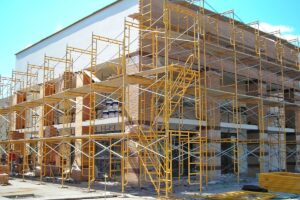
If hostilities end in 2025, Ukraine’s passive fire protection market could grow approximately 2.5 times from 2026 to around $25 million, according to Kovlar Group, a manufacturer of passive fire protection products.
According to the company’s experts, based on the preliminary results of the Ukraine Recovery Conference 2025 (Rome) and taking into account the priority tasks for reconstruction, a change in the segmentation of the passive fire protection market by type of material is expected. Intumescent coatings for steel will account for the largest share — 35-40%, fire-resistant plasters and slabs — 20-25%, sealing systems for penetrations and protection of engineering communications — 25-30%, materials for wood protection — up to 10%, and ventilation and smoke ducts — 5-10%. There is also a forecast for growth in demand for epoxy and polyurethane fire protection systems for oil and gas infrastructure, energy, and strategic facilities, which was previously limited by the high cost of imported analogues.
Konstantin Kalafat, director of Kovlar Group, emphasized that domestic manufacturers have sufficient capacity to ensure large-scale reconstruction of the country’s infrastructure in the post-war period. In particular, Kovlar Group LLC prioritizes the restoration of the energy sector, where the speed of work, availability of materials, and increased fire safety requirements are crucial.
“The use of Ammokote products ensures the efficiency of fire protection work — our own production reduces logistics times and allows us to quickly deliver large volumes. Local production reduces the cost compared to imported analogues, which is especially important for large-scale restoration projects,” said Konstantin Kalafat, director of the company.
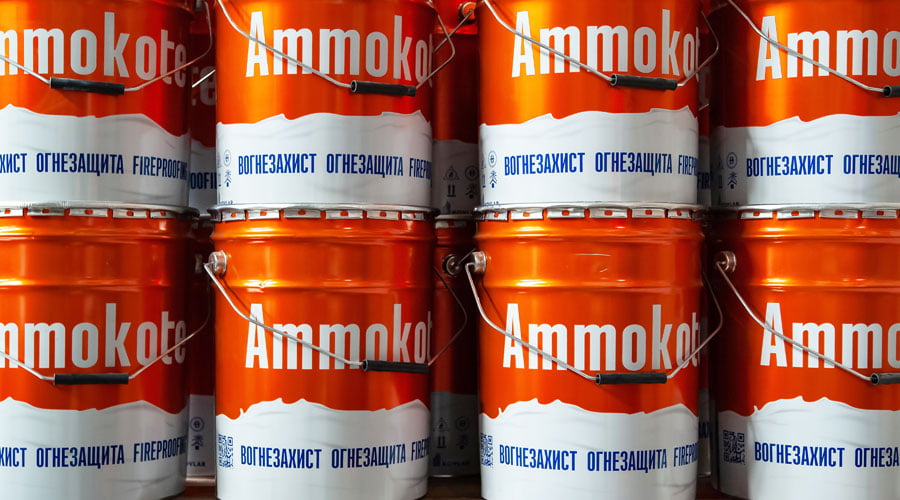
An important factor for reconstruction is the implementation in Ukraine of the law “On the Provision of Construction Products on the Market,” which implements the provisions of Regulation (EC) No. 305/2011 and is expected to increase the competitiveness of the Ukrainian fire protection segment in comparison with European products. According to Konstantin Kalafat, Ukrainian manufacturers of fire protection products should actively implement manufacturing and product control technologies in accordance with advanced European standards.
A critically important area of the company’s activity is fire protection of cable lines at energy facilities, where fire safety is a prerequisite for the reliable and uninterrupted operation of power generation, substations, and networks. Kovlar Group offers comprehensive solutions for cable protection: fire-retardant paints, plasters, three types of systems for penetrations, as well as special couplings, seals, and sealants. In the first half of 2025, the company developed Ammokote TOP-W, a universal finishing material for cable communication fire protection systems; certification of Ammokote EP epoxy fire-retardant paint is ongoing.
“The company adheres to transparent competitive procedures and is ready to work within the framework of open tenders, cooperate with government agencies, contractors, and project teams for prompt, safe, and economically sound reconstruction,” emphasized Konstantin Kalafat.
Kovlar Group LLC was founded in 2015 in Kyiv and is the largest manufacturer of passive fire protection products in Ukraine. According to OpenDataBot, the company’s authorized capital is UAH 1.2 million, and its ultimate beneficiaries are Kostyantyn Kalafat (40%), Andriy Ozeychuk (35%), and Lyubov Vakhitova (25%). The company’s revenue for 2024 was UAH 91.3705 million, which is twice as much as in 2023, and its net profit was UAH 13.4 million, which is 1.7 times more than in 2023. In the first quarter of 2025, the company’s revenue was UAH 13.5 million, with a net income of UAH 1,983,000.
Source: https://interfax.com.ua/news/economic/1101227.html
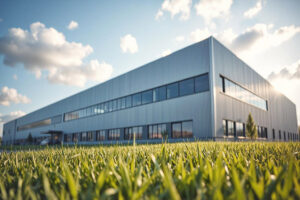
Ruukki ventilated facades now have a Global Warming Potential (GWP) rating, allowing architects and customers to monitor the environmental performance of materials and improve the sustainability of construction projects, according to Rauta.
GWP, expressed in kilograms of CO₂ equivalent per square meter, makes it possible to compare the environmental performance of different building materials and assess their impact on climate change within the life cycle assessment of a building.
“The availability of GWP allows customers to make informed choices in favor of the most environmentally friendly materials and earn additional points in certification according to international environmental standards LEED and BREEAM,” said Rauta Director Andriy Ozeychuk.
GWP data is available on the pages of the corresponding Ruukki ventilated facade products.
Rauta is a Ukrainian company specializing in the supply and implementation of modern building solutions using sandwich panels, steel structures, and energy-efficient technologies.
As the official representative of Ruukki in Ukraine, the company implements projects in industrial, commercial, and civil construction.

Since 2023, Ukraine has had a law adapting EU Regulation 305 and raising the requirements for the quality of building materials. The transition to the new standards will last until 2026, Andriy Ozeychuk, director of Rauta, said in an article for Interfax-Ukraine.
The document also requires the introduction of energy efficiency, certification, and increased responsibility for the declared characteristics of products.
Rauta is a leader in the Ukrainian steel construction market and a member of the European Construction Industry Association. The company provides design, manufacturing, and installation solutions in accordance with current EU regulations. The company is licensed to perform construction works with medium and significant consequences (CC2, CC3). According to the Unified State Register, the owner of 100% of the company’s authorized capital is Andriy Ozeychuk.
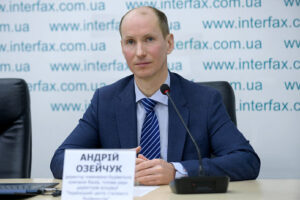
Ukrainian construction companies are experiencing a steady staff shortage, with some vacancies remaining open for up to six months, Rauta CEO Andriy Ozeychuk said in an op-ed for Interfax-Ukraine.
According to him, in 2022-2024, wages in the industry grew by about 20% annually.
Companies are increasingly attracting women and older people, and are also considering hiring workers from Asia.
Rauta is a leader in the Ukrainian steel construction market and a member of the European Construction Industry Association. The company provides design, production, and installation solutions in accordance with current EU regulations. The company is licensed to perform construction works with medium and significant consequences (CC2, CC3). According to the Unified State Register, the owner of 100% of the company’s authorized capital is Andriy Ozeychuk.